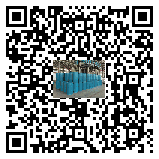Water-based shoe paint wetting agent: the "invisible engine" of environmentally friendly coating, unlocking
five core advantages
When a pair of sports shoes is both light, wear-resistant and fashionable, have you ever wondered what makes water-based
paint achieve "traceless coverage" on complex shoe materials such as leather, fabric, TPU, etc.? The answer lies in an
"invisible additive" - water-based shoe paint wetting agent. It not only allows the paint and the upper to blend perfectly, but
also becomes the "secret weapon" for the upgrade of shoe coating with its environmental protection, high efficiency and
multi-functionality. Today, we will reveal its five core advantages!
Advantage 1: Environmental pioneer, VOC "zero" green revolution
Traditional solvent-based shoe paint relies on organic solvents such as benzene and ketone, which release a large amount of
VOC (volatile organic compounds) after volatilization, endangering the health of workers and the atmospheric environment.
Water-based shoe paint uses water as a solvent. When combined with a wetting agent, it can achieve:
VOC emissions are reduced by more than 90%:
Wetting agents help water-based paints to efficiently wet the substrate at low VOC content, meeting environmental regulations
such as EU REACH and China GB 30981.
Easier wastewater treatment: Water-based coating wastewater is easily biodegradable, reducing corporate environmental
protection costs.
Non-toxic and harmless workshop: Workers do not need to wear gas masks, and the working environment is safer.
Case: An international sports brand introduced a water-based paint + wetting agent solution to reduce factory VOC emissions from
200mg/m³ to 15mg/m³, and successfully passed the "Green Supply Chain" certification.
Advantage 2: Compatible with everything, the "universal glue" in the shoe material industry
The diversity of upper materials is a coating problem: porous leather absorbs oil, fabric fibers are interlaced, TPU has low surface
energy... Wetting agents resolve contradictions through "molecular magic":
Leather/microfiber leather: penetrate fiber gaps but do not "flood" the texture, retaining the natural texture.
Fabric/mesh: quickly wet the fiber, prevent leakage or accumulation, and ensure uniform coating.
TPU/rubber: reduce surface tension, let the coating "grasp" the smooth substrate, and increase the peel strength by more than
30%.
Cold knowledge: some high-end shoes use the "3D flying weave + TPU patch" structure, which needs to be matched with a
compound wetting agent to achieve simultaneous wetting of the two materials.
Advantage 3: Performance upgrade, coating from "passing" to "excellent"
The wetting agent is not only a "spreading assistant", but also a "performance enhancer":
Anti-fouling and water-repellent: combined with fluorocarbon wetting agents, the water drop angle on the coating surface
can reach more than 120°, and the oil stains can be wiped clean.
Wear-resistant and scratch-resistant: some wetting agents cross-link with resins to form a dense protective layer, and the
wear resistance of the upper is increased by 50% (Taber wear test).
Anti-static: reduce dust adsorption and keep the upper clean for a long time, especially suitable for outdoor shoes and work shoes.
Customized feel: Through molecular design, the coating is given a silky, suede or matte touch to enhance the wearing experience.
Experimental comparison: The coating without wetting agent was scratched at 200 turns in the wear test, while it could reach
1000 turns without damage after adding wetting agent.
Advantage 4: Cost reduction and efficiency improvement, the "invisible profit" of the painting workshop
Wetting agent seems to increase costs, but in fact it saves money for enterprises by improving efficiency and yield rate:
Reduce rework rate: The rework rate caused by defects such as shrinkage and orange peel is reduced by 40%, saving labor
and material costs.
Increase coating speed: Wetting agent improves leveling, and spraying efficiency is increased by 20%-30%, which is suitable
for large-scale production.
Extend equipment life: Reduce paint residue and blockage, and reduce the cleaning frequency of tools such as spray guns
and rollers by 50%.
Economic account: A shoe factory has an annual output of 1 million pairs. After introducing wetting agent, it saves about
500,000 yuan in rework costs and 200,000 yuan in equipment maintenance costs each year.
Advantage 5: Innovation-driven, "unlimited possibilities" for future coatings
With the development of materials science and nanotechnology, wetting agents are breaking through traditional boundaries:
Intelligent response wetting: Through temperature and pH-sensitive wetting agents, the coating can achieve adaptive
performance in different environments
(such as becoming hydrophobic when exposed to water).
Nano-level wetting: Combined with silica nanoparticles, the coating has both super-hydrophobic and self-cleaning
functions, and stains roll off automatically.
Bio-based wetting agents: Made from plant oils and sugars, they are completely degradable and help achieve carbon
neutrality goals.
Frontier case: A "light-responsive wetting agent" developed by a laboratory can switch the hydrophilicity and hydrophobicity
of the coating through ultraviolet irradiation, and may be used in color-changing sports shoes in the future.
Conclusion: From "behind-the-scenes heroes" to "industry standard"
Water-based shoe paint wetting agents used to be "invisible characters" in the coating process, but now they have become
synonymous with environmental protection, quality and efficiency. It allows water-based paint to shine on complex shoe
materials, allowing every pair of shoes to take into account appearance, durability and environmental protection.
In the future, with the iteration of technology, wetting agents may unlock more black technologies, and the green revolution in
shoe coating is starting with this drop of "invisible magic".


